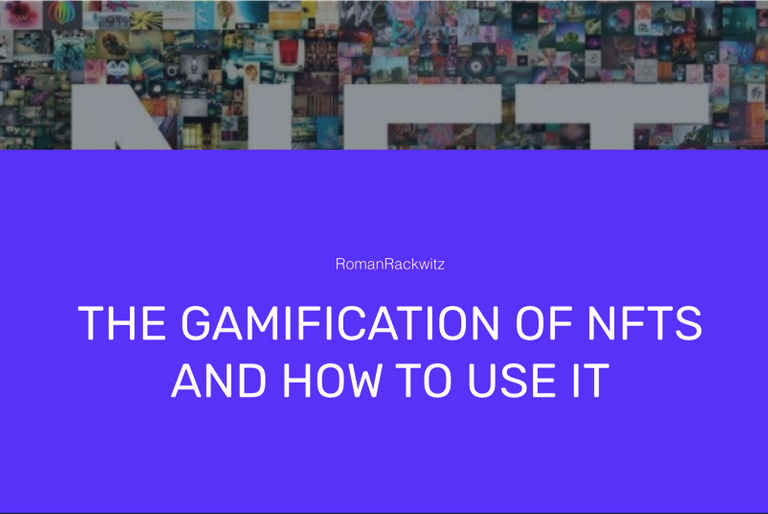
Text and picture by @romanrackwith and his post
I like to introduce Roman
Lately I spend some time to move people to hive. As usual, this start takes some time and therefore I do this experiment.
Here you see an interesting article from a friend of mine and it might kickstart his activities on Hive. For sure, I put him with 50% beneficiaries on this post.
Have a read to his great post and please give him a warm welcome.
I added a few little Markdown formating, some comments and pictures to the original post to have a better #Hive expirience
Hey Hive Family
a new #Hive user is born
please have a follow to @romanrackwitz
This article is published at https://romanrackwitz.de/the-gamification-of-nfts-and-how-to-use-it/ as part of a series of articles from @romanrackwitz on his blog https://romanrackwitz.de/
These are the TOP-4 reasons why and how Gamification can be used successfully by NFT-projects to solve some serious challenges.
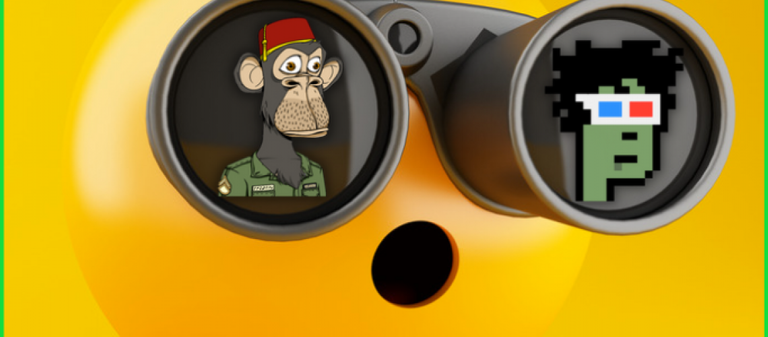
What’s Happening
NFTs are unique, distinctive digital entities that are written down on the blockchain. Above all, they stand for one thing: ownership.
This is exactly why they are natively suitable as digital ‚characters‘, commodities, or even personal ‚keys‘ for valuable things.
Currently, NFTs are perceived in mass attention only as a collector’s item. And yes, they have dominated a lot of this in recent months. The peak was of course the auction of the Beeple artwork as NFT and the incredible demand for Crypto Punks NFTs and Bored Ape Yacht Club NFTs.
_and here on Hive we have the HIVE PUNKS
a comment by @detlev
See two of the PUNKs from @detlev
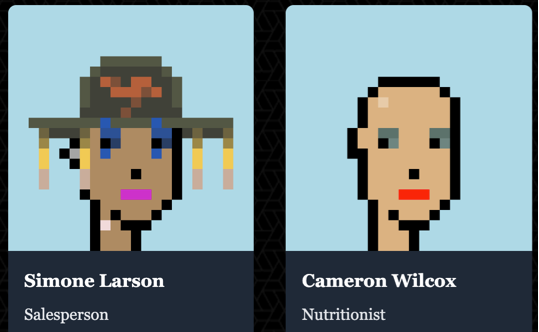
Get your punks at https://punks.usehive.com/
But NFTs are so much more than just jpegs.
Because an NFT (non-fungible token) is 100% identifiable, it works perfectly as the digital twin of a real-world asset. As a certificate, it is thus the ‚bridge‘ between the real and the digital world.
The Big Picture of Issuing NFTs
NFTs can therefore be something like the personal extension of one’s own being and actions into the WorldWideWeb. They stand for something, depending on the context in which we use them. An NFT can be the digital identity of the so much discussed Metaverse, or it can be the personal key to an event, online or offline, and only the owner of the NFT has access. And so much more.

Picture by Dalia Nave at Pexels
While initially most NFTs were created and issued by one-person organizations such as artists, more and more organizations are now coming around to the idea of using NFTs for themselves as well. Why NFTs may or may not be useful in a particular context is not the issue here. But the urgent questions for such actions are then almost inevitably such, for example:
1. How do you design the initial distribution (the drop) of NFTs?
2. How to maintain the attractiveness of the NFT over as long a period as possible
3. How can NFTs be designed to evolve from static to dynamic elements?
4. How to create the widest possible distribution of the NFT instead of a few owners accumulating as many of the NFTs as possible
The Classic Approach to drop NFTs
If we take a look at the possible strategies that have been used to date to accompany the initial release of NFTs, we quickly come across approaches such as Whitelists and shilling.
Whitelists
Whitelists are a common practice in the pre-sale of NFTs. It helps with the marketing of new NFT projects and rewards early supporters with guaranteed access to one of these NFTs. To get on the list, or to be whitelisted, the people behind these NFTs normally ask you to perform different activities like joining their Discord, tweeting about their project and following them on Twitter, and so on.
Whitelisting is now very common. And anyone interested in NFTs (and also DeFi) can hardly get past these lists. I’m also on countless ones, follow too many discords, and have tweeted too often about the projects.
Why too much? Because I participated there mainly to get a place on the whitelist. More interaction with the project is usually not important and the communities, because many are probably on the road like me, rarely exciting. Thus, communities are created here that is filled with deadbeats.
The reputation of whitelists, in order to prepare the introduction of NFTs into the market with their help, has suffered a lot in the meantime.
Of course, such a development always leads to exciting alternative approaches, as could be observed, for example, with Levana or ether.cards. Gamification also played a major role in both of these projects.

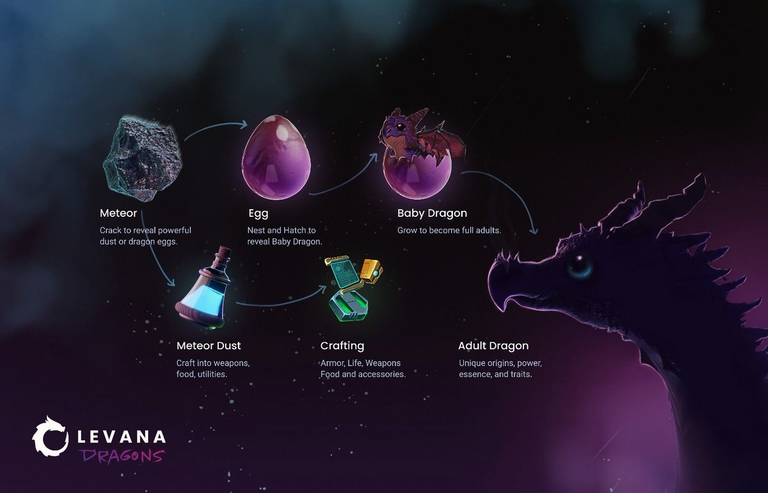
Shilling
Shilling is an even more, shall we say, direct approach.
This is simply about promoting your own NFT project or even talking about an NFT you are about to invest in yourself. Of course, with the intention to keep the interest high here, in order to profit from increasing demand.
Here many NFT collectors also support each other, as one asks others to name their current projects and vice versa.
1. Gamifying the drop of NFTs
Already at the initial drop of an NFT, you can do a lot of things right, or wrong, to have a dedicated and loyal community later on. The two approaches just mentioned, such as whitelisting and shilling, have proven to be unpromising.
At the same time, the inherent characteristics of these non-fungible tokens ensure that you can fall back on exciting and helpful mechanics to trigger AND retain people. One of the successful elements is, among others, storytelling. I have already written about the potential of storytelling combined with NFTs here.
Example: Levana protocol
The Levana protocol (a DeFi project) recently showed very clearly how NFTs can be used to launch even a financial product emotionally with storytelling. If this is then enhanced interactively by integrating gamification, anything is possible. The success proves Levana right. Here is some feedback from the initiators after the successful NFT drop.
One way to take NFTs to a new level here is the way you discover the ‚right‘ NFT for you and access them. Or how an NFT discover its owner!?
Non-fungible tokens always have two sides. One side describes what the NFT stands for. It describes its capabilities and its resources. Does it allow access to something? Does it stand for an earned status? Does it allow you to have a voice in important decisions? This allows an NFT to become a tool. Thus, it already fulfills heuristics #4 of the four significant heuristics that stand for gamification from our experience: Thor’s hammer.
Any gamification should become its tool of progress in the hands of its user. After all, games are about nothing else: meeting challenges by using the resources at our disposal.
I have done a video about Thor’s hammer. Unfortunately only in German.
The other side is currently the more obvious one: The visualization of the NFT. As a rule, this is known as a picture. A jpeg file. Either as a work of art or, at least as common, a PFP (picture for profile). Either way, it is usually a picture.
However, new features come to light here as well. This is how dynamic NFTs are created in the meantime. This means that the visual appearance of an NFT can change. Events can be programmed into the NFT and when they occur, the respective appearance changes accordingly. Like an avatar from a video game that becomes stronger with each progress of its player.
Why it Matters For The NFT Drop
If we look at these two sides of the same coin, we can see exciting possibilities for the initial drop scenario.
What if NFTs already change their properties before the drop, depending on who or when, or how many were looking at them, trying to bid on them, or wanted to reserve them?
The different characteristics of each NFT also give potential owners different motivations to commit more or less to it individually. So what if you only have a limited number of resources available to bid on an NFT, for example? So all participants have the same resources at their disposal. One or more tokens could be requested beforehand, for example. The strategy when and how to bid on individual NFTs determines success or failure here. This would also be an approach to circumvent the well-known whale problem in the crypto area.
Combining such an approach with an attractive story, the acquisition of an NFT represents the beginning of a journey in the story. So far, it seems more like the end. Because if you own a classic NFT, it sits in your wallet until you sell it. Maybe a lucrative happening, but certainly not an interactive one.
2. Gamification to Maintain The Attractiveness of an NFT
In a game, we players are moved from challenge to challenge based on our actions. It’s like a Journey, sometimes accompanied by a story that unfolds over time in front of us. Usually accompanied by the fact that we or our character in the game develops in parallel with it. Often you can see this visually in the avatar, as well as in his skills, or his access to resources. The character is thus the embodiment and the result of the player’s actions in the game itself.
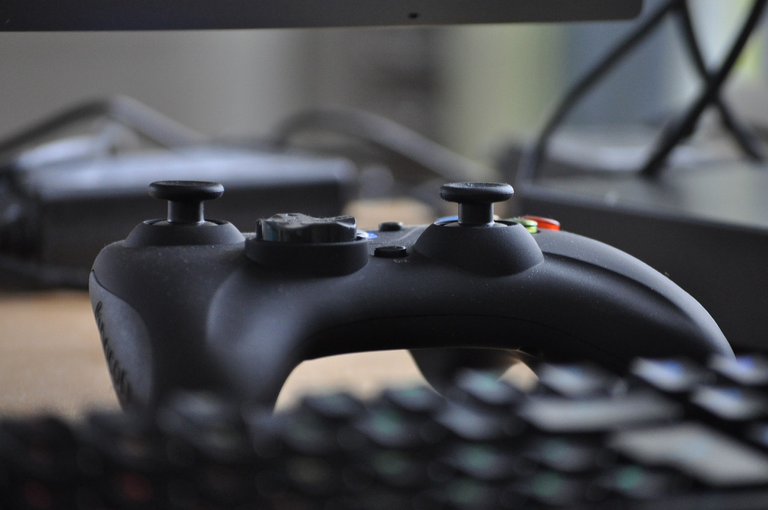
This can be combined very well with the approach from psychology, which is called Hook Model (colloquially also often called IKEA effect). This model describes the effect of certain mechanics on the long-term motivation to do something with pleasure. Mainly driven by oneself and without a constant carrot in front of the nose.
The time and work invested in the development and advancement of the avatar in a game increase the chance that the respective player will stay with the game even if it is not so attractive at the moment. However, due to the efforts already made, giving up is not worth it.
Such an effect, which we still know well from the days of Tamagotchi & Co, is proven to be far more effective in the long term than demanding loyalty through rewards.
Why it Matters for the NFT Attractiveness
Exactly the same effect can be achieved by using NFTs. Shortly after the drop of the NFTs into your own wallet, you may not see much yet. But with time and the appropriate interactions, the NFT develops into a stately visualization. And if you take a step beyond the surface, then this visual development of the NFT also includes various properties that the NFT enables or even demands of its owner?
Similar to a progress tree, which we know from many game applications, the NFT unfolds over time before and with its owner and user. An NFT can become a constant companion that acts as a personal dashboard for its respective context. Attachment theory is the name of the model behind the emotional approach that can be taken with such an NFT.
3. From Static to Dynamic
99% of today’s NFTs are static. They consist of an image, a gif, or even a short video clip. But this image, this gif, and also this video image will always be the same. No matter what its owner does. Maybe it changes its value in the eye of the beholder, but in fact, it is the same zeros and ones.

From a gamification designer’s perspective, this is a definite no-go. The iron law here is that the ‚player‘ must be clearly shown what impact his behavior has, whether in the virtual or the real world. Different feedback systems are therefore the daily tools of our trade.
In the meantime, there are the first projects that show how NFTs, through the connection to so-called oracles, can also react directly to events in the real world. They change their appearance, possibly wear their own NFTs, which are then unlocked, and much more.
Why it Matters For NFTs
NFTs will always be able to have a value even as static elements. There is no doubt about that, especially when you look at them in the context of art. An original Mona Lisa should not change, please.
But if you create an element that adapts to circumstances through dynamic characteristics, the NFT begins a kind of life of its own. This allows us gamification designers a feature that has hardly existed before. Especially not if you talk about implicit gamification, which I consider to be (my) supreme discipline.
The possibilities to build a bridge between a target group and a context or a gamification design with the help of such designed NFTs always leave me open-mouthed amazed. We are only at the beginning of our journey here.
4. Homogeneous Distribution vs. NFT-Whales
This is about one of the big questions in general in the crypto world, but also, especially in the NFT space.
In the crypto scene, people who hold an excessively large number of Cryptos or NFTs are referred to as whales.
A recent report from Moonstream, published on October 21st, has discovered that NFT ‘Whales’ hold more than 80% of NFTs on Ethereum. 16.71% of wallets, of people who are known as whales, are said to own 80.98% of the NFTs on the most popular blockchain in the space.
https://nftevening.com/nft-whales-hold-more-than-80-of-all-nfts-on-ethereum/
Why a Homogeneous Distribution Matters For NFTs
Some NFT projects, especially those where community building around these NFT is a big part of it, have a big problem with this. These so-called whales then own a large part of the NFTs of a particular project and thus often keep NFTs, which are considered entry tickets to the community for others, off the market.

Such behavior is, of course, not in the spirit of most projects. On the other hand, it also shows that some ‚NFT holders‘ believe in a project and want to participate in it as much as possible. Can gamification help us to at least partially resolve this dichotomy?
Be Smart And Gamify it
If we transfer this challenge for NFTs into our way of thinking, then let’s consider why people usually play a game with only one avatar and not with several. Obviously because they would have too much ’skin in the game‘. A game character has the mostly inherent purpose to develop in the context of the game. This can largely only happen through the time and effort of its playing ‚owner‘.
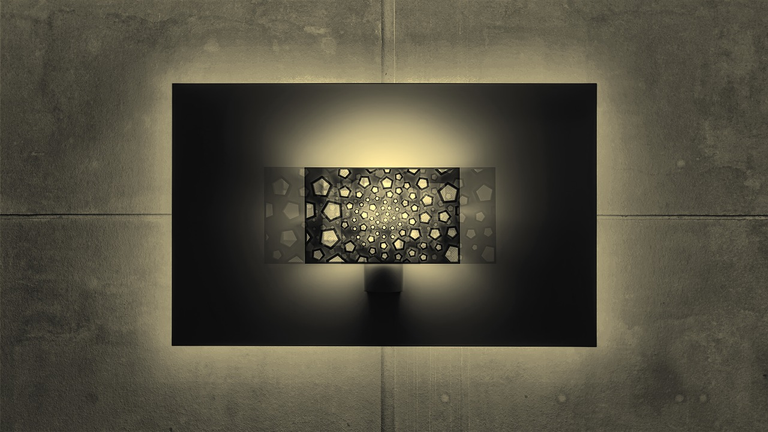
An avatar that is not used loses its value sooner or later from the individual point of view of its owner. Because as the game evolves, and with it the player’s skills, the demands on the avatar also grow.
We can also make use of this native occurrence in NFT projects, should they be more than purely collectible NFTs.
As long as the owner of a NFT e.g. from the NFT project regularly receives some kind of resource, which is important for upgrading the NFT, as long as a so-called whale (who owns many NFTs from the project) always has to think carefully about how to distribute this resource to his NFTs. Distributing it to one NFT would be most effective, distributing it to two or three NFTs might still be a strategy, but distributing the same resource to 20 or 50 NFTs would be mostly useless. None of the NFTs really benefit from it and you lose out to more consistently developed NFTs of other owners. This in turn also clouds the pure collector’s value over time.
A simple argument to downsize its large number of NFTs a bit and bring some of them to market.
Another means would be the shrine-of-the-ancestors mechanic. With this mechanic, previous owners of an NFT benefit from the progress of the same NFT by its current owner or at a later course. It is important to pay close attention here that this does not lead to a snowball system. But it is possible to prevent this. Also this mechanics simplifies the decision to give a few more of the NFTs on the market, because you can still profit from them even if they are no longer in your own possession.
Now we have simply given and discussed four reasons why and how gamification can be profitably used for NFTs. Take this as a little inspiration, because we have just scratched the surface.
In this series of Gamification & NFTs have already appeared:
- Why I’m bullish on taking Gamification to a new level with NFTs
- The role of NFTs for Gamification
- The beloved power of storytelling and NFTs
Connect with Roman
Here at Hive you find that Gamification Dude at @romanrackwitz and as you see at this screenshot he is brand new.

Have a great day everybody
and enjoy your NFTs

pic by @detlev
Enjoy the #BeerSaturday
have 3 pics and a story
around beer - and go!

@Detlev loves HIVE

Thanks, @detlev, a great article that has deepened my knowledge a bit more about the connection between gamification as a learning process (because I'm in that profession in a way) and the NFT as a badge, a marker of something that is originally yours. It creates a certain ambition and self-belief in people if we go from that level.
@romanrackwitz has linked all this perfectly on several aspects. 👏 😎
Thanks @seckorama and yes - NFTs have a huge potential and we are just at the starting level.
NFT Gamification is real, but using NFTs in gaming is much better as it gives new usecases. I like NFTs that aren't still but have life through the use cases they can be used upon and earning that they can generate actively, rather than a store of value.
Posted Using LeoFinance Beta
In addition to other things, this is why Splinterlands is awesome. The Splinterlands cards are NFTs, and Splinterlands is one of the first NFT games. It is a revolutionary game. It is awesome to have this game on the Hive blockchain.
That is actually a very good point and this inGame NFT seems to be the next level. I had a chat with @romanrackwitz about this and we might see another post from him about this
Du wurdest als Member von @investinthefutur gevotet!
Dazu noch ein kleines !BEER & VOIN-Token
I never really understand this NFT thing.
I remember buying an image and was unable to sell it back.
I need to read more on it l honestly.
We may do some more of this posts as the overall feedback is very positive.
~~~ embed:1464148524409499661 twitter metadata:U2FyZEltcGVyaXVtfHxodHRwczovL3R3aXR0ZXIuY29tL1NhcmRJbXBlcml1bS9zdGF0dXMvMTQ2NDE0ODUyNDQwOTQ5OTY2MXw= ~~~
The rewards earned on this comment will go directly to the person sharing the post on Twitter as long as they are registered with @poshtoken. Sign up at https://hiveposh.com.
Wow, thanks. I really appreciate that. :-)
this is a great article. Very exciting to consider all the possibilities. If it wasnt time for me to sleep I would go to all the links and read the whole series so far. Ive got some ideas for NFTs that a couple of us are working on, but they are fairly basic at the moment. I have ideas for how they could be gamified but no expertise in how to make that a reality. Let me know if you would be interested in discussing it anywhere as it would be great to have the conversation opened out. I would certainly love to make it an opensource community project....
Hey @basilmarples, sounds great. Sure, let's talk about this. There are so many possibilities to take this whole approach into different areas, industries, and topics. Would love to chat about it.
Man! I'm absolutely intetested in playing this NFT game and know not where to start. Now with all this info, i'm dizzyier than before.. But thanks! Dynamic NFT's caught my total attention. I'll keep studying posibilities.
Cheers!
Together we thrive!
Absolutely. The potential of dynamic NFTs is mindblowing. At least from my perspective ;-) But we have to figure out how to get started, test it, and mature it. :-)
It's pretty basic, but in Alien Worlds the background of the NFTs change as you upgrade their "shininess". I know that Phantasmachain has been working on the concept of "smart" NFTs as well. Are there any existing blockchain games that are implementing dynamic NFTs?
Games are still surprisingly reserved here. But dreams.quest is on its way here, as is Neondistrict or even Bertha.io.
welcome to Hive! Pleasure to have you on board! 🤩
Thanks so much. Looking forward to this.
I think many NFT based games are just the start of a new era of all this play to earn stuff like #AxieInfinity shows us.
View or trade
BEER.Hey @detlev, here is a little bit of
BEERfrom @investinthefutur for you. Enjoy it!Do you want to win SOME BEER together with your friends and draw the
BEERKING.@detlev! The Hive.Pizza team manually curated this post.
PIZZA Holders sent $PIZZA tips in this post's comments:
You can now send $PIZZA tips in Discord via tip.cc!
Good overview. Rehived.
Danke mein Lieber @lichtblick
Great stuff here man, we are working on building up a brand new Hive Punks community so come check us out sometime :)
TONS of new ideas being thrown around for use cases for Hive Punks and I already have a couple that Im about to deploy soon.
Keep an eye out for PUNKZ token on Hive-engine, should be ready to go live by tomorrow at the latest.
Whooot, love to add some fun with your token to the next #BEERsaturday challenge.
Just let me know....